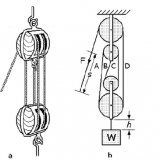DA VINCI SURGICAL SYSTEM ROBOT 11090
Edward Hospital now has the da Vinci Si Surgical System, the most advanced robotic technology available which can be used for a range of minimally invasive procedures in gynecology, urology, thoracic and general surgery. The da Vinci System provides surgeons with greater precision, control and access to hard-to-reach areas, allowing extremely complex operations to be performed through just a few small incisions instead of traditional open surgery.
The da Vinci Surgical System is a robotic surgical system made by the American company Intuitive Surgical. It is designed to facilitate complex surgery using a minimally invasive approach, and is controlled by a surgeon from a console. The system is commonly used for prostatectomies, and increasingly for cardiac valve repair and gynecologic surgical procedures. According to the manufacturer, the da Vinci System is called “da Vinci” in part “because Leonardo da Vinci invented the first robot“, as discovered by Mario Taddei. Da Vinci also used anatomical accuracy and three-dimensional details in his works.
Da Vinci robots operate in several thousand hospitals worldwide, with an estimated 200,000 surgeries conducted in 2012, most commonly for hysterectomies and prostate removals.By January 2013, more than 2,000 units had been sold worldwide. The “Si” version of the system costs on average slightly under US$2 million, in addition to several hundred thousand dollars of annual maintenance fees.
Overview of the System
The da Vinci System consists of a surgeon’s console that is typically in the same room as the patient, and a patient-side cart with four interactive robotic arms controlled from the console.
-Three of the arms are for tools that hold objects, and can also act as scalpels, scissors, bovies, or unipolar or bipolar electrocautery instruments.
-The fourth arm carries an endoscopic camera with two lenses that gives the surgeon full stereoscopic vision from the console.
The surgeon sits at the console and looks through two eye holes at a 3D image of the procedure, while maneuvering the arms with two foot pedals and two hand controllers. The da Vinci System scales, filters and translates the surgeon’s hand movements into more precise micro-movements of the instruments, which operate through small incisions in the body.
To perform a surgical procedure, the surgeon must first use the system’s weight to judge how hard it should work. Then he/she uses the console’s master controls to maneuver the patient-side cart’s three or four robotic arms (depending on the model). The instruments’ jointed-wrist design exceeds the natural range of motion of the human hand; motion scaling and tremor reduction further interpret and refine the surgeon’s hand movements. The da Vinci System always requires a human operator, and incorporates multiple redundant safety features designed to minimize opportunities for human error when compared with traditional approaches.
The da Vinci System has been designed to improve upon conventional laparoscopy, in which the surgeon operates while standing, using hand-held, long-shafted instruments, which have no wrists. With conventional laparoscopy, the surgeon must look up and away from the instruments, to a nearby 2D video monitor to see an image of the target anatomy. The surgeon must also rely on his/her patient-side assistant to position the camera correctly. In contrast, the da Vinci System’s ergonomic design allows the surgeon to operate from a seated position at the console, with eyes and hands positioned in line with the instruments. To move the instruments or to reposition the camera, the surgeon simply moves his/her hands.
Advantages
By providing surgeons with superior visualization, enhanced dexterity, greater precision and ergonomic comfort, the da Vinci Surgical System makes it possible for more surgeons to perform minimally invasive procedures involving complex dissection or reconstruction. For the patient, a da Vinci procedure can offer all the potential benefits of a minimally invasive procedure, including less pain, less blood loss and less need for blood transfusions. Moreover, the da Vinci System can enable a shorter hospital stay, a quicker recovery and faster return to normal daily activities.
Links:
Youtube Video Link: http://youtu.be/NwGnrP_6PFM



